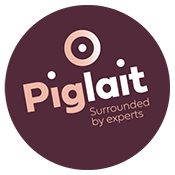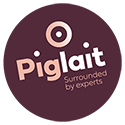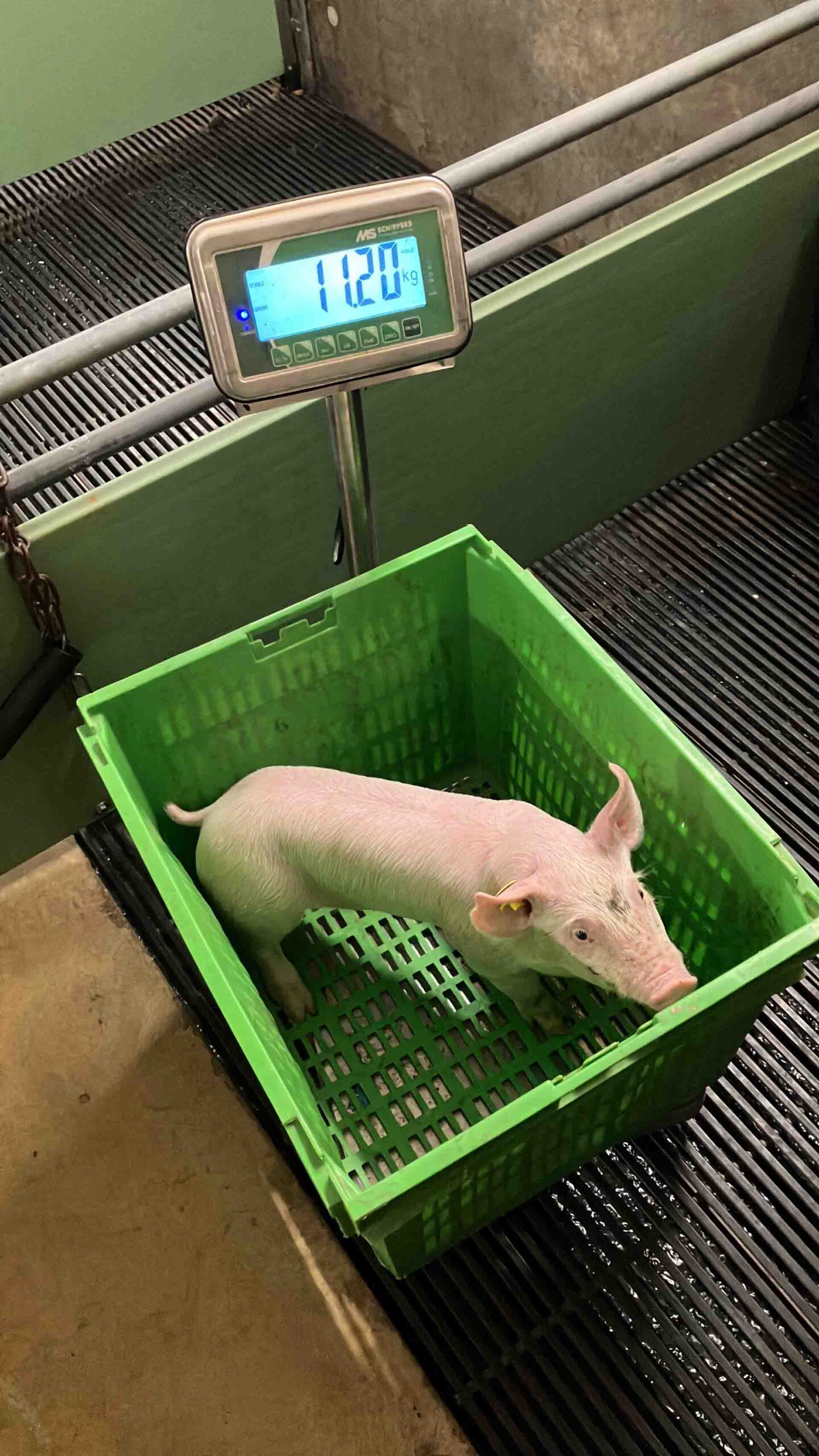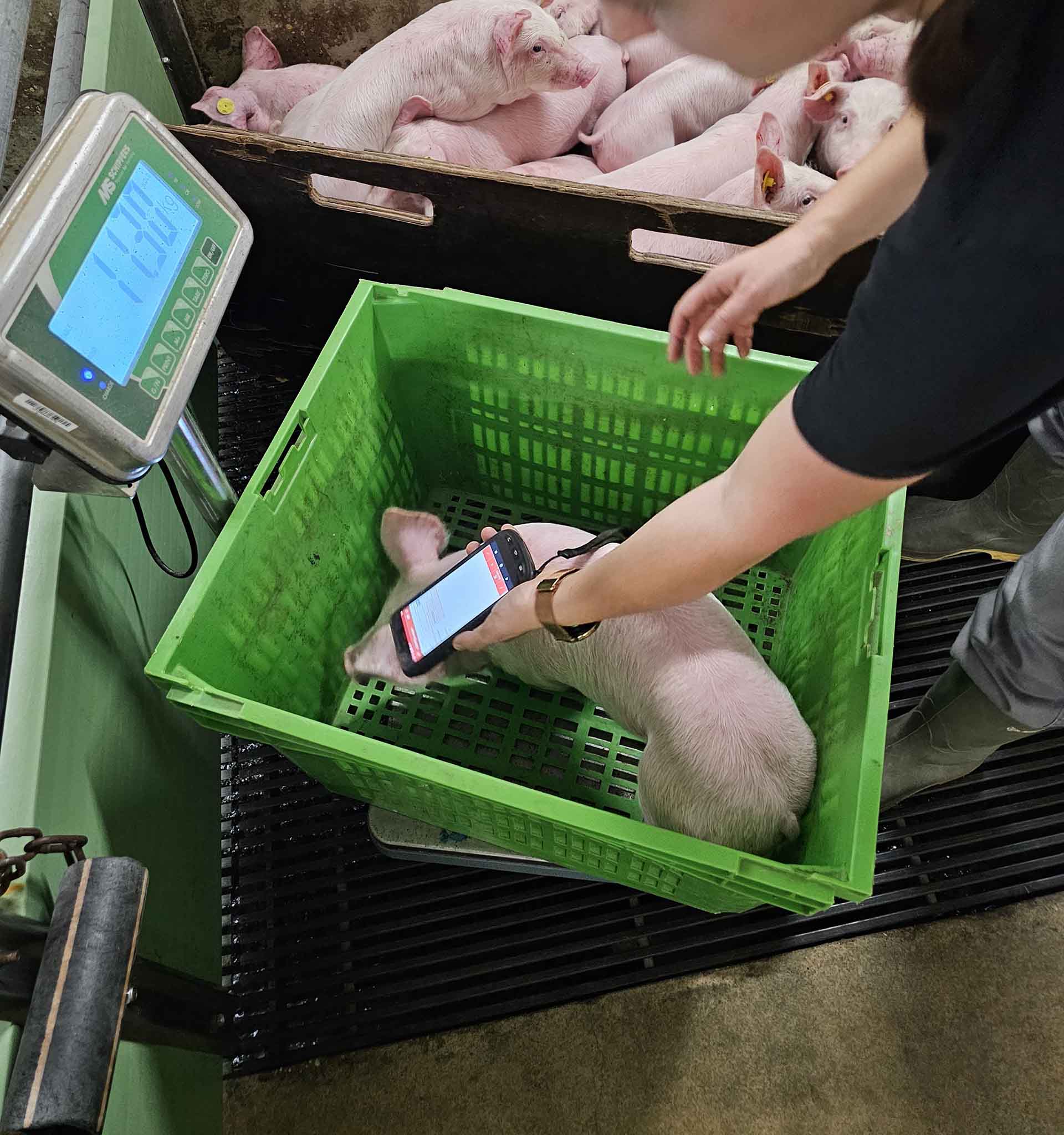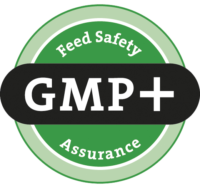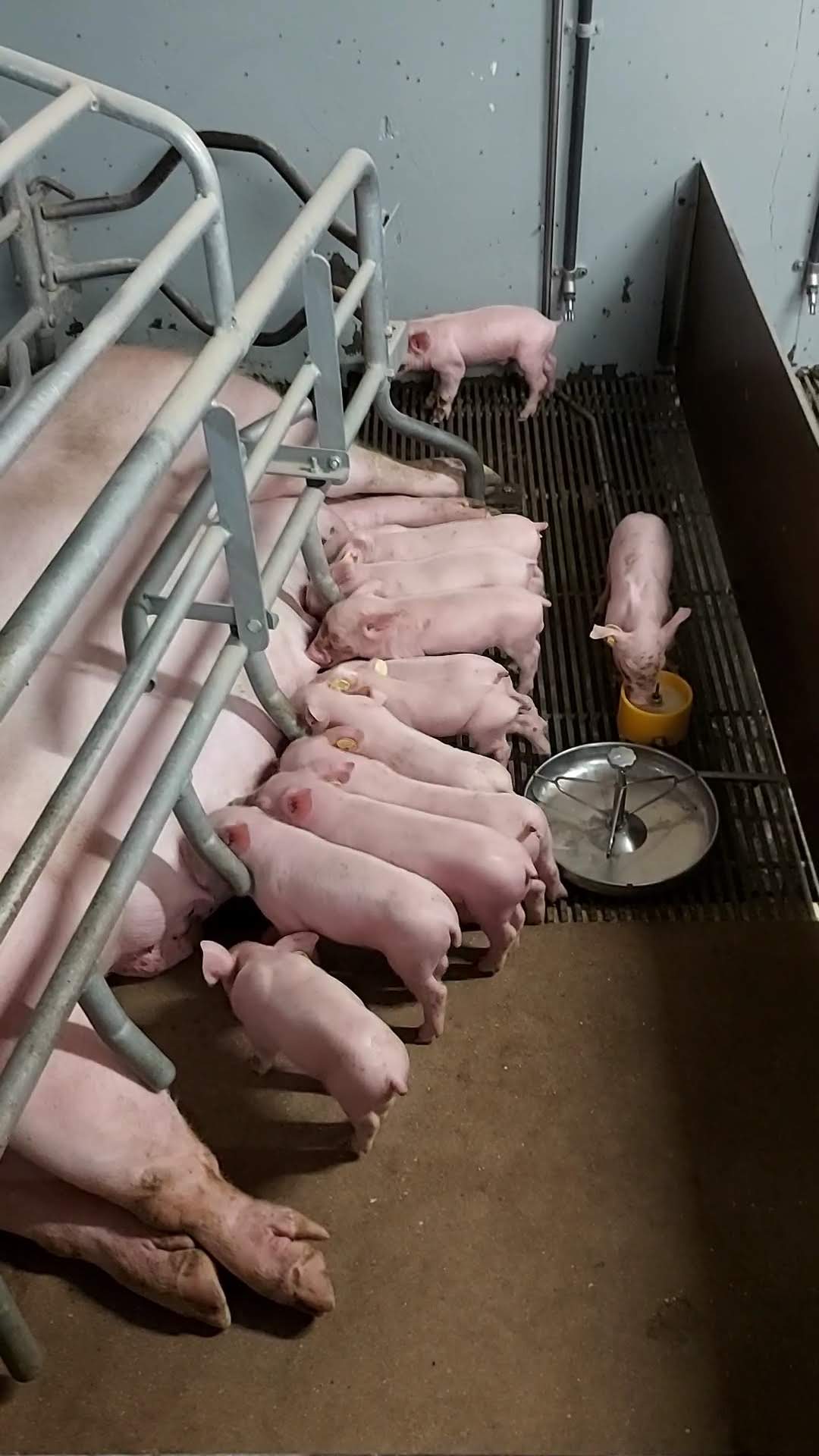
The positive effects of supplementation of piglet milk replacers (PMR) reach further than the weaning period. At Piglait, we decided to set up a big-scale and long-term trial to prove our concept with clear figures on growth, health and economics. The trial is conducted at a closed pig farm in the Netherlands. The trial involves about 10,000 piglets from birth till slaughter. Half of the piglets receive our Robust Litter milks next to a traditional dry prestarter and weaner feed, the other half of the piglets only receive dry feed and no milk. In this article we present you with the first outcome. Over the course of the next half year we will update you regularly with the latest new results.
Trial set-up
The trial is set up at Brand Pigs in Gilze, the Netherlands. Brand Pigs is a commercial farrow-to-finish farm with 400 sows in a two week batch system. The piglets (TN70 x Tempo) are weaned at 3 weeks of age. Half of the farrowing rooms are equipped with an Automix Cup System, through which the Piglait milks (Piglait Blue and Piglait Green) are supplied. All piglets receive a dry prestarter twice a day from day 6 onwards and are switched to a weaner feed from day 17.
Next to the dry prestarter and weaner feed, the piglets in the Piglait group have 24/7 access to the Piglait Blue milk via the Automix Cup system from day 4 after birth and are switched to Piglait Green on day 13 until day 19. The last two days before weaning, the piglets only receive water through the cups (Table 1). Control piglets only have access to water through the drinking nipple. All piglets are tagged at day 4 with an electronic ear tag, which allows us to easily register and track piglets until slaughter. All piglets are weighed individually at day 4 and day 21. The weights are linked to the ear tag (Figure 1). Feed and PMR intake are registered on group level.
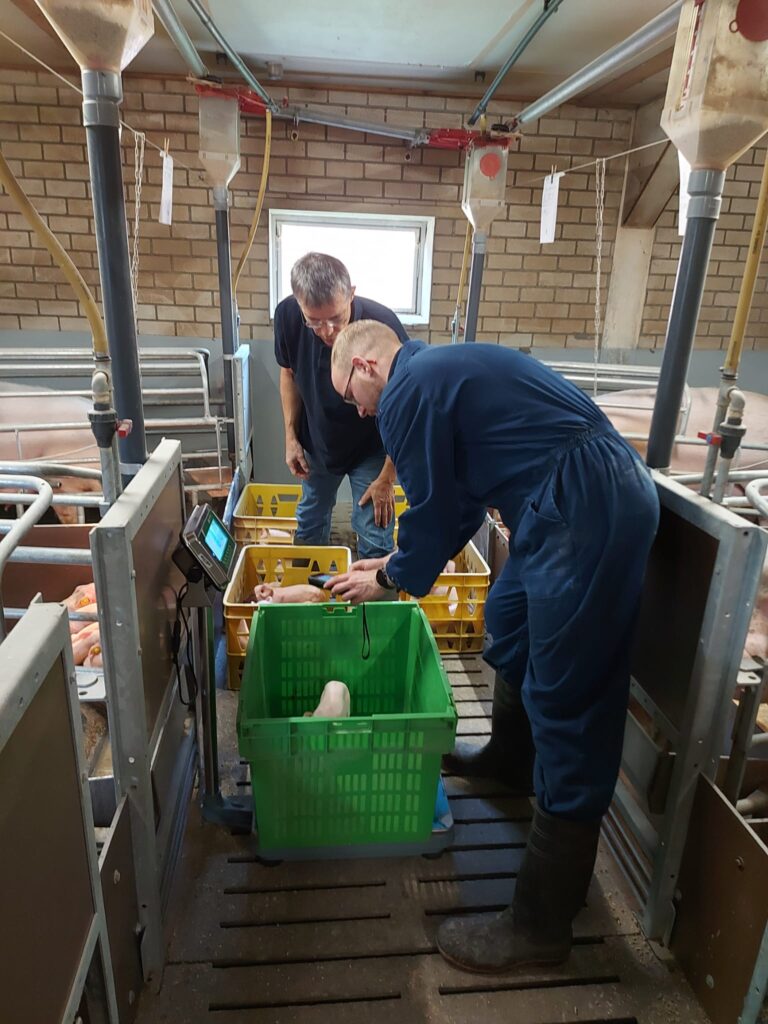

First results
The total dry matter intake of the Piglait piglets was clearly increased compared to the control piglets. On average, the Piglait piglets consumed 300 g of PMR through the cups, while the intake in dry feed was equal to the intake of the control piglets. This resulted in 200 g higher weaning weights in the Piglait piglets (6.3 kg vs 6.1 kg; p < 0.01, table 2). Also, half a piglet more was weaned per sow in the Piglait group compared to the control group (p < 0.01).
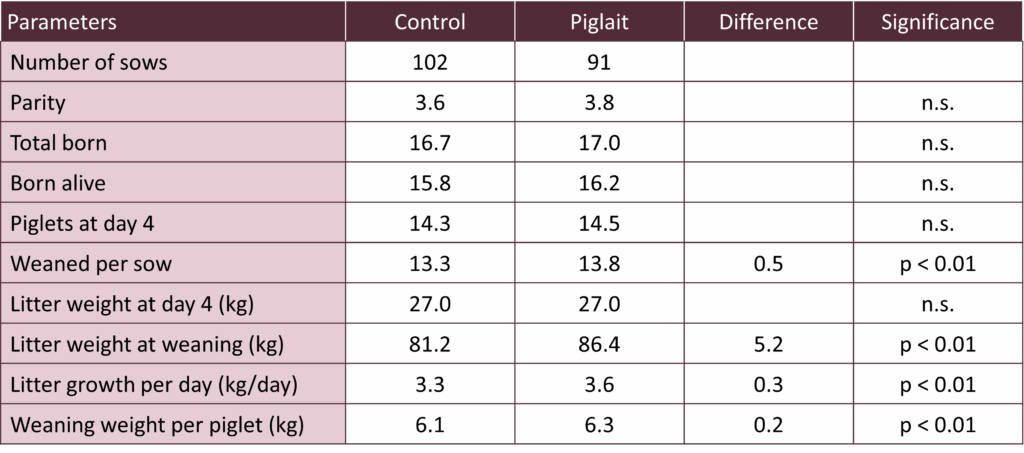
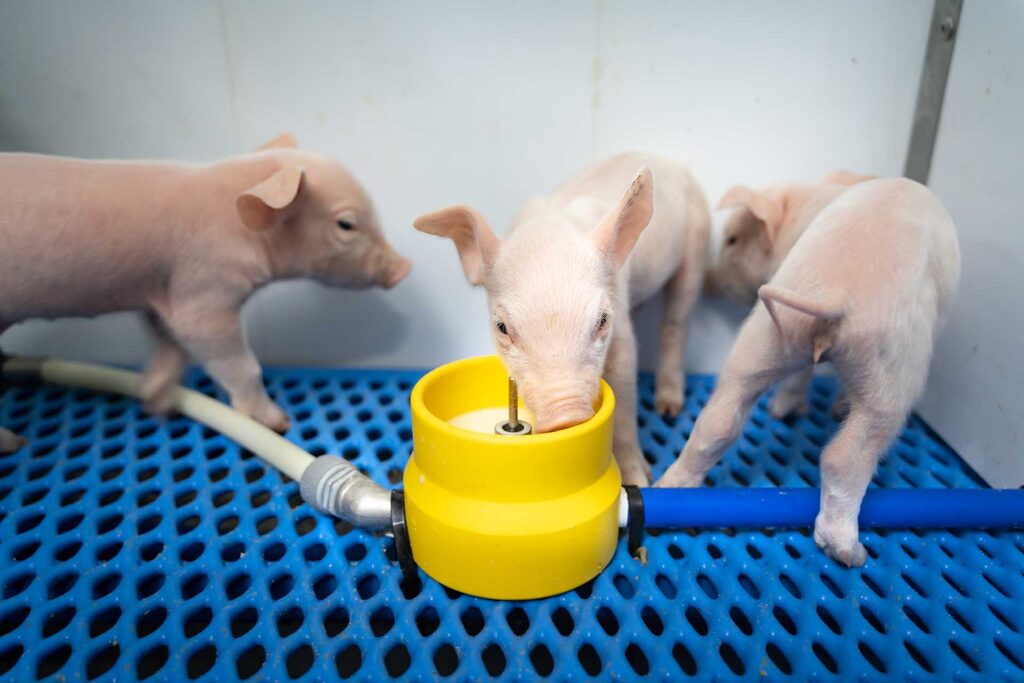
Less foster sows and heavier, more uniform piglets
Still, the improved weaning weight and increased number of piglets weaned per sow are not the only benefits for the farmer. The automatic provision of PMR in the farrowing house decreases the workload for the sow farmer. Brand Pigs is enthusiastic about the achievements. They have to move less piglets and create less foster sows. On top of that, there are less small piglets at weaning in the Piglait group (Figure 1). Supplying PMR, thus, is interesting in every farrowing house, even if sows have a good nursing capacity.
Figure 01 shows the distribution of the individual body weights at weaning at the age of 3 weeks. In the control group, almost 20% of the piglets was lighter than 5 kg, compared to only 13% in the Piglait group. The reduction in the lower segment of piglets to the middle and upper weights, results in an improved uniformity of the group. This shows that especially the smallest piglets benefit from the additional PMR supplementation before weaning. After weaning, the improved uniformity will make it easier to adjust the feeding schedule to the entire group.
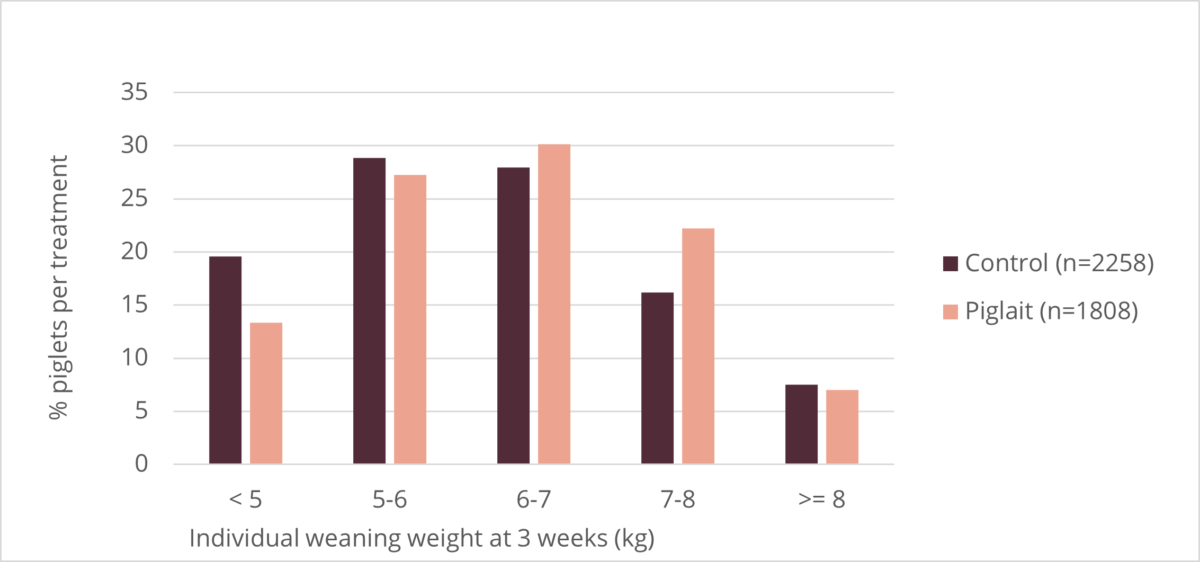
Figure 01 – Distribution of weaning weight of 3 week old piglets in the Brand Pig trial (n=4066, preliminary results). There are 7% less piglets below 5 kg in the Piglait group.
What’s next?
We believe these first results of this long-term trial are very promising. In the upcoming months we will keep you in the loop on the new results and how the improved weaning weights translate to weights at 70 days of age. Stay tuned!
Table of Content
Choose a news category
Most recent posts
Share this!
Read more related posts
It's a wrap! Two weeks ago, this was the last of 10,000 piglets to be weighed individually in our farrow-to-finish trial. Of course we continue [...]
A few weeks ago, Vincent ter Beek (Editor of Pig Progress) visited Brand Pigs, the farm where we execute our farrow-to-finish trial. He talked to [...]
